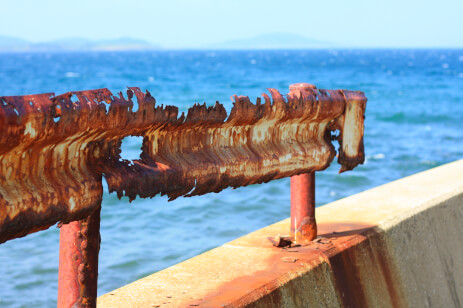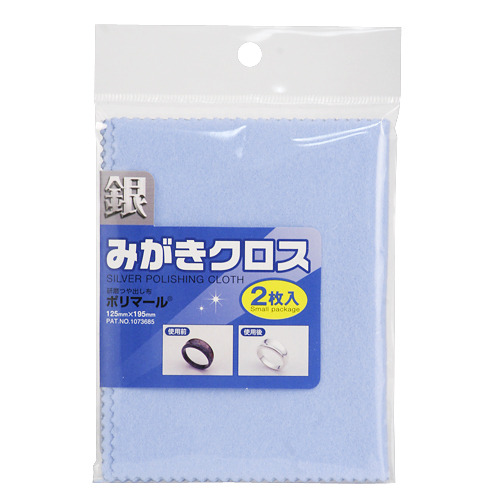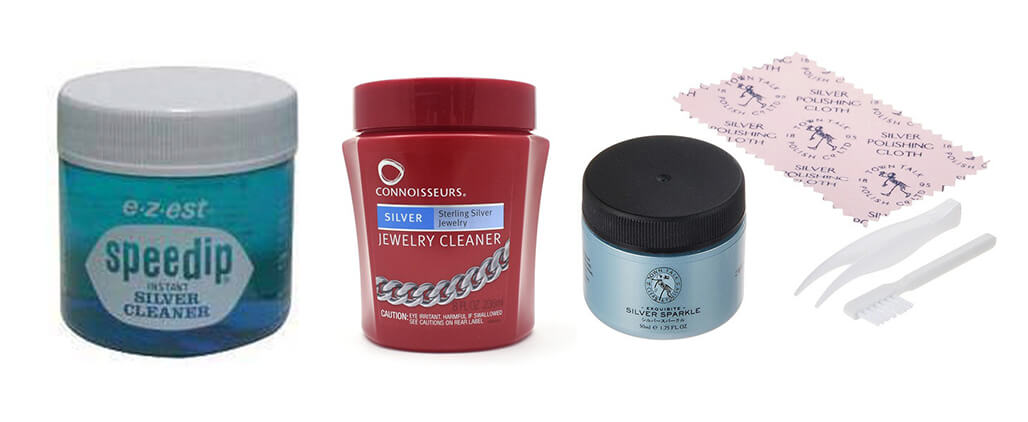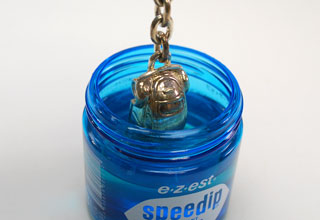Does silver tarnish? The Truth About Silver Tarnishing
Share
This experience may be familiar to many individuals.
However, it is important to note that the black coloration is not caused by the formation of 'rust' resulting from oxidation, contrary to popular belief.
The True Nature of Rust on Silver 925
This true nature is a chemical reaction called 'sulfidation,' where it reacts with sulfur compounds and chlorine to turn black.
Silver, especially Silver 925, has a unique characteristic where it can react with certain elements in the environment.
One of the most common reactions is with sulfur compounds and chlorine.
When silver comes into contact with these elements, it undergoes a chemical process known as 'sulfidation.
This isn't the same as the rusting that occurs with iron; instead, it's a specific type of tarnishing that results in a dark, often black, discoloration on the silver's surface.
This is why silver jewelry or items might turn black over time, especially if exposed to substances containing sulfur or chlorine.
What's the difference between sulfidation and rust?
Every so often, we're asked,
'Can silver rust?'
To put your mind at ease, the straightforward answer is 'No'.
It's crucial to understand that sulfidation and rusting are not the same.
Rusting is when metals, like iron, are exposed to moisture and, over time, they turn a reddish-brown color and start to deteriorate.

While rust aggressively eats away at metals, making restoration nearly impossible once it sets in, sulfidation is a different story. Sulfidation results in a mere 'sulfide film' on the metal's surface, leaving the inner structure untouched. This means that a simple polish can bring back its original luster. Think about those old copper coins that have been lying around for decades; a bit of polishing, and they're gleaming like new. That's the magic of sulfidation.
In everyday life, it's incredibly rare for silver to corrode to the point of disintegration. So, if you've kept a genuine silver item stored for years, there's no need to worry about it deteriorating from the inside out.
This resilience is what makes silver accessories timeless pieces that can last a lifetime.
Silver's Enemy is Sulfur
In our daily lives, where can we find the sulfur responsible for tarnishing silver? Are you aware that sulfur is present, although in small quantities, in the air we breathe and even in the proteins found in human sebum? Additionally, sulfur compounds can be found in the surfactants used in cosmetics. Surprisingly, sulfur is also present in rubber, synthetic rubber, perm solutions, and detergents. Therefore, it is advisable to avoid storing silver products alongside these items.
Chlorine Also Tarnishes Silver
Chlorine also makes silver products turn black. Specifically, it can be caused by sweat, saltwater, tap water with chlorine, chlorine-based bleach, or mold removers.
"But chlorine is also present in water, right!? Does that mean we can't rinse it off if something gets stuck on it?" You don't need to worry about that.
As long as you don't leave it wet with tap water for a long time repeatedly, you don't need to be overly cautious. After washing it, just make sure to thoroughly remove the moisture with a soft cloth, and you'll be fine.
The important thing is to wipe it clean and remove any chlorine or sulfur residue when you come into contact with it.
Routine Care for Silver Jewelry
In order to maintain the cleanliness and quality of your silver, it is important to be aware that even if it appears clean at first glance, it may actually have moisture, sweat, oils, or cosmetics on its surface. To effectively clean your silver after wearing it, it is recommended to use a soft cloth such as chamois leather or a glasses cleaning cloth to gently wipe it down. It is crucial to distinguish between a polishing cloth specifically designed for silver, which contains abrasives, and a regular soft cloth like the one used for glasses. For regular care, simply wiping your silver with a soft cloth that does not contain any abrasives will suffice.
When it comes to storing your silver, it is advisable to keep it in an airtight container or a zip-lock bag. It is important to remove as much air as possible from the container or bag to minimize exposure to air, which can cause tarnishing. For added protection, you can double up the bags to provide an extra barrier against air.

How to Get Rid of Stubborn Tarnish on Silver
In order to ensure the long-lasting beauty of your silver items, it is important to provide them with special care as time goes on, even with regular maintenance. When the need for special care arises, please take into consideration the following methods:
Precautions to take before cleaning:
It is crucial to avoid using the following cleaning methods on gold-coated accessories, as these methods may cause the coating to peel off and result in discoloration. Therefore, it is advisable to refrain from using these cleaning methods on such items.
When polishing accessories that contain pearls or natural stones, it is essential to avoid applying any polishing liquid or immersing them in water. Pay extra attention to the stone areas and ensure that they are not exposed to these substances.
1. Silver Polishing Cloth

Available for just a few dollers on online shopping sites and at home centers. These cloths contain an abrasive agent that can remove tarnish and restore shine. If your silver has minor surface scratches, polishing with this cloth might make them less noticeable.
Points to consider when using:
Be careful with the pressure you apply to avoid deforming the accessory.
If your accessory has a matte finish, polishing might reduce its matte appearance.
After use, since the abrasive agent might remain on the accessory's surface, it's a good idea to wipe it off with another soft cloth. If you're concerned, you can also rinse it with water.
2. Silver Cleaner Liquid

This product is widely available for around 1,000 to 2,000 yen. Just immerse your accessory in the liquid for a few seconds, give it a gentle shake, and you'll be amazed at how a once-blackened accessory can shine like new. One of the advantages of using this cleaner is that it can reach parts of the accessory that a cloth might miss, like chains or intricately designed pieces.

After lifting the accessory out of the cleaner, make sure to rinse it thoroughly with water and wipe off any moisture.
Points to consider when using the cleaner:
Sometimes, the surface might turn a bit white. To avoid this:
Don't immerse the accessory in the cleaning liquid for more than 10 seconds.
Avoid cleaning too frequently.
If the surface does turn white, you can restore its shine by polishing it with a silver cloth.

It might seem a bit tedious to maintain silver accessories, but there's undeniable joy in seeing them shine like new again, right?
Compared to gold or platinum, silver might require a tad more care. However, this extra effort often leads to a deeper attachment when wearing silver accessories.
Whether you appreciate the worn-in charm that comes with regular use or the brand-new sparkle after a good cleaning, I encourage you to enjoy both aspects of your silver pieces.
